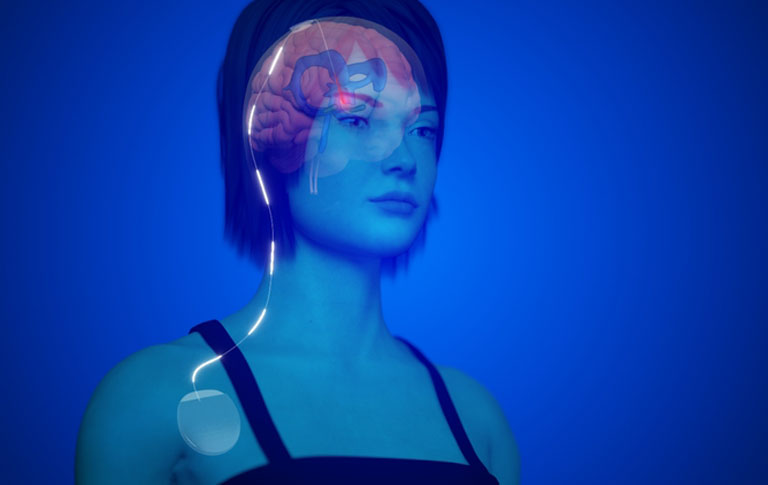Accueil / Our research / Medical devices
Medical devices
Micro- and nanotechnology and, more broadly, electronics could enable dramatic progress in medicine.
And yet, the potential of these technologies remains underexplored. The Clinatec endowment fund and partners are developing innovative medical devices to bring the capabilities these technologies can offer to new therapeutic approaches.
We are addressing challenges like how to achieve new levels of miniaturization and ensure that devices are biocompatible. These integrated systems are complex, and can include functions like electrodes, sensors, integrated circuits, and light sources to capture biological signals, process them using artificial intelligence, and stimulate tissues using electricity or light.


The Clinatec endowment fund has been granted special access to the CEA’s applied research platforms and to the Clinatec clinical unit run by Grenoble Alpes University Medical Center, which has its own neurosurgery operating room, patient rooms, and imaging equipment. Getting clinicians and experts in advanced technologies working together is the most effective way to transform ideas for new therapeutic approaches into reality.
“We are fortunate to have robotics and electronics engineers, physicists, biologists, neurosurgeons, and other clinicians all on site. We are all working together to develop new solutions in the field of health.”


Treating Parkinson's disease using infrared light
Every project at Clinatec starts from an identified patient need and leads to the development of a therapeutically and technically complex medical device.
NIR probe
Clinatec developed a medical device to apply light to specific brain cells to slow degeneration. Clinical trials to assess the device’s ability to slow down the progression of Parkinson’s disease began in 2021. Grenoble University Medical Center and the Clinatec endowment fund have been joined by several other partner hospitals in this exciting research: Hospices Civils de Lyon, Assistance Publique des Hôpitaux de Marseille, and Hôpital Henri Mondor de Créteil.
